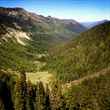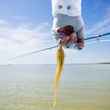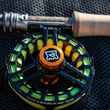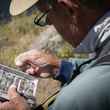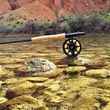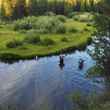Continuing the trend of new product announcements in advance of the IFTD/ICAST show in Orlando, Dr. Slick has unveiled their lineup of new tools and gadgets for the coming year. Included in their new product offerings are their Typhoon pliers, a pair of premium pliers that are targeted at fly and conventional anglers alike.
Dr. Slick's new Typhoon pliers are made of 6061-T6 aircraft quality anodized, salt-water resistant aluminum that is fully machined, not die cast. Also featured are non-slip rubber grips and a self-opening
spring. The Typhoon's cutters are HR (Rockwell Hardness) 70+, which Dr. Slick describes as "lethal on all monofilament, new age braid and synthetic lines plus coated wire up to 60-pound." The pliers' jaws offer a half smooth and half striated design.




